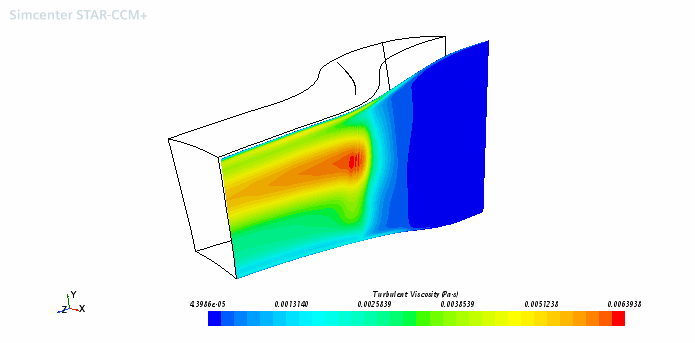Defining an Average Surface (Turbomachinery)
In Simcenter STAR-CCM+, the average surface part evaluates the average or weighted average of a chosen scalar or vector field function over a 3D region or part in the context of an axisymmetric parameterization. This derived part is typically used for post-processing results of a turbomachinery analysis.
With this derived part, you can produce a 2D data set that is made up of the averaged 3D solution. From this data set, it is possible to perform any post-processing that is meaningful with a 2D data set such as producing scalar scenes, vector scenes, and line graphs. Since this is a 2D data set, you can view the average on a flat 2D plane.
The average part is computed in a parameterized coordinate system based off the cylindrical coordinate system where the radial axis direction is (0, 1, 0) and the tangential axis direction is (-1, 0, 0). (That is, the average direction is always the theta direction or circumferential direction.)
This procedure assumes that you already have an axisymmetric parameterization defined in your simulation.
- Follow the general procedure outlined in the section, Defining Derived Parts General Workflow. Choose the menu option,
- Specify the input parts and display option as described in the section, Defining Derived Parts General Workflow.
-
Complete the average surface definition by specifying the following properties:
For more information on the available properties, refer to the section Average Surface Properties.
This derived part appears as a flat plane that is placed at the minimum circumferential value of all input parts.
